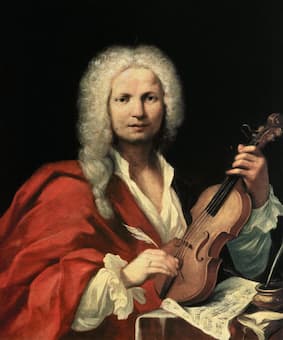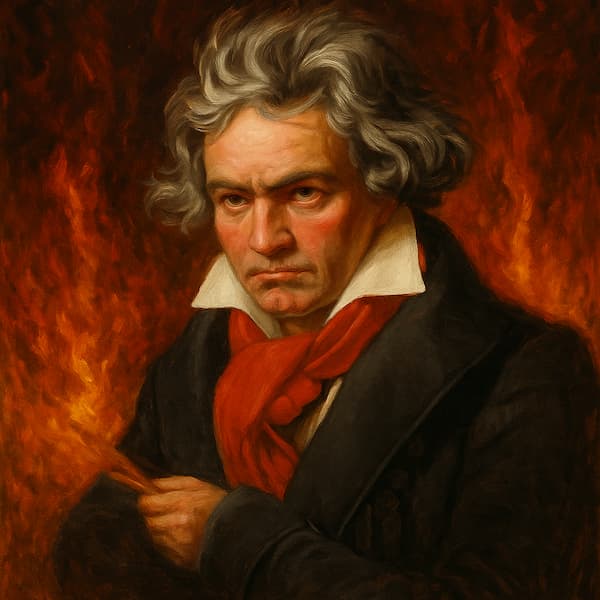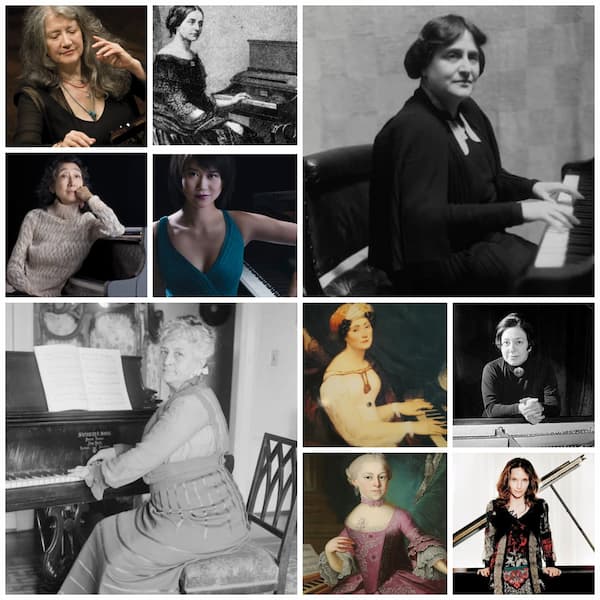
Antonio Vivaldi © art-prints-on-demand.com
Classics, standards — even at times masterpieces — often make classical music’s true devotees raise an eyebrow. “Oh, not again”. How many times have they been performed, at times doubtful and at rarer exceptional. It is quite true that the most popular of all classical music is often over-heard, over-taught, almost ridiculed and reduced to mere musical objects.
But these works are in fact the upper crust of classical music. They have transcended their place of birth, the classical world, to reach the popular one; they are well-known to everyone — although not their titles and composers — and they are to-go’s favourites; from telephones lines to wedding lines, concert halls, commercials and soundtracks. They are loved as much as hated. Yet, there are reasons why these classics are classics. There are some compositional rules which they follow and which ensure their success.
Let’s select some of these classics, from the baroque, the classical and the romantic period: The Four Seasons by Vivaldi, Pachelbel’s Canon, “Rondo alla Turca” from Mozart’s Piano Sonata No. 11 and Beethoven’s Bagatelle No. 25, aka “Für Elise”. For most of these works were composed by the most famous of all musicians; composers which are all well-known, at least on the surface. All of these works feature elements that are ingredients to a recipe for success.

Pachelbel’s Canon © Wikipedia
The first element is melody, what appeals to the human ear is most and foremost melody; from the songbird to the lullaby, melodies have a magical way of enchanting the ear and catching its attention. The second element is repetition; indeed, once the human ear hears something, it seeks for its repetition and familiarisation. Actually, the human ear and brain strive for repetition; it is the unknown, the unfamiliar which scares it. The third element is a simple structure; the listener seeks a sense of direction and understanding of the musical intentions. There is no interest for the listener to feel being brought to several unknown and incomprehensible places. The listener wishes for straight lines and clear destinations. Finally, it is all about building on what is deemed acceptable — indeed one needs a familiar environment to feel at ease and open to novelty. Very similarly to taste, it is by developing on what has been approved that the listener can find enjoyment.
“Für Elise” is so lyrical that one cannot stop from singing over it — it is repeatedly observable in Beethoven’s Music, the Moonlight Sonata, the “Ode to Joy” etc. One of the many talents of Beethoven was his capacity at composing simple, yet effective, impactful and memorable melodies over complex and elaborated music.
Pachelbel’s Canon works on both a well-accepted harmonic progression — during the baroque era, and later ones, much of classical music was written on common harmonic progressions which followed strict established rules — and the idea of repetition. Indeed, the canon is one of the oldest forms of repetition, and just like the ostinato allows the listener to digest the information before it comes again in a new form. Both forms have survived enough to still be very much in use today, although their names have changed.
Mozart’s “Rondo alla Turca” while bringing novelty in its orientalism — if there is — is painted on a well-known sonata canvas. In fact, much of Mozart’s music is composed over a background of popular structures and musical phrases. This is where the genius of the composers resides; the ability to surprise and create novelty on overused structures. Mozart was a master at experimenting on well-known formats; his Symphony No. 40, Eine Kleine Nachtmusik etc.
Wolfgang Amadeus Mozart: Piano Sonata No. 11 in A Major, K. 331 – III. Alla turca: Allegretto (Maria João Pires, piano)
The Four Seasons, and much of Vivaldi’s concerti, if not music, sound inarguably similar — a Vivaldi signature perhaps, or the marks of the conditions of his work —, and it is through the use of common harmonic progressions, similar rhythmic groupings and values, orchestration and structure, that the composer creates a unity in his work.
All the attributes could be given to many pop(ular) songs; actually there are the founding elements of pop music. In fact, the classics of classical music and the classics of popular music often have so much in common, that at times they hide in each other: Pachelbel’s Canon can be found in Aphrodite’s Child’s “Rain and Tears”, while Beethoven’s Moonlight Sonata can be perceived as the basis of The Beatles’ “Because”.
To this selection, I should feel the need to add a few more of these countless classics… Of course, Bach’s first prelude from The Well-Tempered Clavier and perhaps his Cello Suite No. 1— particularly the “Prelude” —, Mozart’s “Ah vous dirais-je, Maman” — aka “Twinkle, Twinkle, Little Star” — or Schubert’s Trout Quintet. As a matter of fact the variations on “Die Forelle” have even been used by Samsung for its dryers and washing machines! In each of these examples is present at least one element that represents a ticket for success… Actually, one would fill several volumes of anthologies of the use of these classics in film soundtracks and commercials.
J.S. Bach: The Well-Tempered Clavier, Book 1, BWV 846-869 – Prelude No. 1 in C Major, BWV 846 (Glenn Gould, piano)
This small selection of classics is not only one of great pieces of music, it has also been for many the gates to the world of classical music. Yes, the Schoenbergs, Messiaens, Stockhausens, Schnittkes, Boulezs etc. have done considerable artistic achievements and their works are hugely important in shaping the music following them – but how many times has someone claimed having fallen in love with classical music after one of their works? It is with Vivaldi, Bach, Mozart, Beethoven, Chopin etc., the great names of classical music that most amateurs have caught the virus.
The ingredients which shape these classics bridge two worlds — academic and popular — and allow the discovery to be enjoyable both in terms of pleasure and intellectual growth. Eventually, it is a very short way between classical music and pop music!
For more of the best in classical music, sign up to our E-Newsletter



